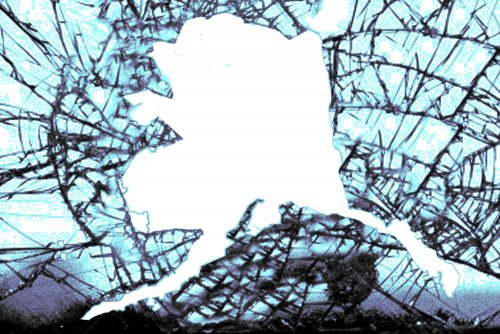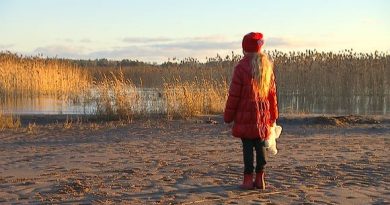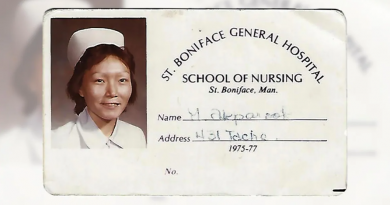Alaska’s women speak up about violence, abuse

The numbers Andre Rosay and his team of researchers crunch, analyze and make sense of are predictably consistent: In Alaska, in all corners of the state, one out of every two women has suffered either domestic or sexual violence in her lifetime. Many have been harmed recently, within the last year.
As director of the Justice Center at the University of Alaska Anchorage, Rosay has led the effort to better understand just how many women in Alaska are experiencing violence, to create a more accurate picture beyond what traditional law enforcement crime statistics reveal. Through random, voluntary phone surveys with adult women in Alaska, Alaska women are sharing the painful details of their private lives, the hurt and violations they’ve endured, in hopes that others might be spared in the future.
After three years, the Alaska Victimization Survey has managed to create a snapshot of the prevalence of violence against women in Alaska, and of what it looks like in 11 separate communities within the state. The latest numbers, released this month, concentrate on the Matanuska-Susitna Valley, Kenai, and Ketchikan. And the numbers are again disheartening. One out of every two women has experienced violence in her life. For about one in three Alaska’s women, the violence is sexual. Even more experience physical violence from a loved one.
High rates of partner, sexual violence
At a presentation in the local library Tuesday night, residents of Ketchikan, an island community in Southeast Alaska, got an eye-opening dose of reality. Based on a survey of 648 women, half have experienced violence. Forty-three out of 100 had experienced intimate partner violence. Thirty-three out of 100 had experienced sexual violence. Rosay and his team estimate that in Ketchikan, population 8,291, some 440 women experienced abuse last year.
The survey is limited — it didn’t deal with non-English speakers, women who didn’t have phones or a place to live, and it doesn’t specifically address child sexual assault. Consequently, Rosay believes the number of incidents is actually higher.
“We can’t keep thinking that these things don’t happen in our community,” said Naomi Michalsen, Executive Director of the nonprofit organization Women in Safe Homes, or WISH. “These numbers are actually women in our community.”
Michalsen has worked at WISH for nearly a decade and says she and her staff believe a lot more women are hurting in southern Southeast Alaska than statistics indicate. The emergency shelter WISH that runs out of a nearly century-old building is increasingly busy. Clients include women and children who leave their homes because of domestic violence, sexual assault or child abuse, and range in age from infants to the elderly. In recent years, the number of women and children needing assistance has tripled. In 2011, the last year for which numbers are available, the 32-bed shelter served 523 people, provided a place to sleep 5,865 times and served 17,880 meals.
Women seeking help come from Ketchikan, Prince of Wales Island, Metlakatla, Petersburg, Saxman and Wrangell. The outlying communities have their own grassroots organizations, but WISH is the largest among them and provides the most services.
Only six rooms
Sometimes, when the shelter is full, women will stay on a mattress on the floor or sleep on a couch, Michalsen said. And with only six rooms, privacy is a luxury some clients are forced to live without. In the future, WISH hopes to construct a new facility that will offer greater privacy, rooms for children to play in and a gathering space. For now, though, it’s making do with the old building. But money that could go to other services gets spent on leaky pipes, electrical needs, or any of the other maintenance headaches that come with any aging structure.
Michalsen hopes that documenting the true level of need will help get more resources — money, staff, prevention and intervention programs — to the people who need them.
Recently, the Alaska Council on Domestic Violence and Sexual Assault funded two efforts in the region as “emerging programs” — Womens Aid in Violent Emergencies in Petersburg, and Helping Ourselves Prevent Emergencies on Prince of Wales Island. WAVE will get $140,990 for the October 2013-to-June 2014 period. HOPE will receive $62,005.
It’s a good start, Michalsen said, recalling a WISH client who’d come from an isolated, rural home who had said that if she had access to better options in her home community, maybe — just maybe — she would have gotten help sooner.
Michalsen longs for a day when people stop letting statements like, “I can’t help her because she keeps going back,” roll off their lips. It can be difficult to leave an abuser, and it can be a dangerous, if not lethal, time for a woman, Michalsen said.
Hopeful signs
Victim-blaming never helps, Michalsen said. We need to be asking questions like “Why do we allow this violence in our community?” Or, “Why is it the woman rather than the abuser who has to leave the family home?”
Despite the deplorable statistics, Michalsen sees hope. In her years working on behalf of women, she’s seen attitudes shift. It used to be that telling someone she was the director of a women’s shelter was a conversation stopper. Now, people listen and may even ask questions or share stories, although the conversation remains awkward. And men are learning how to get involved, and be a part of the solution.
And to the women who shared their secrets with a stranger for 30 minutes in a random phone survey, who then became statistics in reports that will hopefully inspire change, she is thankful. “Its shocking to me that they would be willing to share that information in hopes of making a change in our community,” Michalsen said.
Contact Jill Burke at jill(at)alaskadispatch.com



